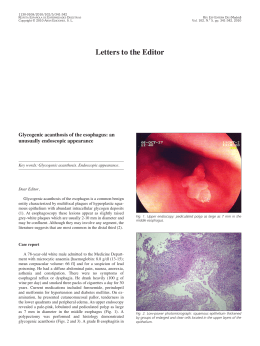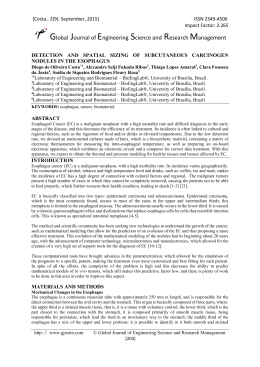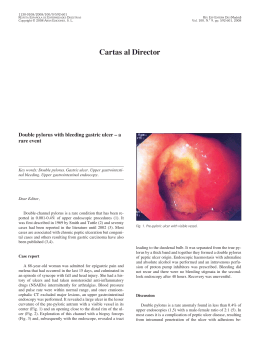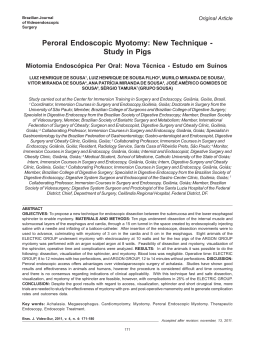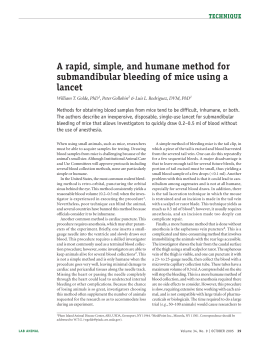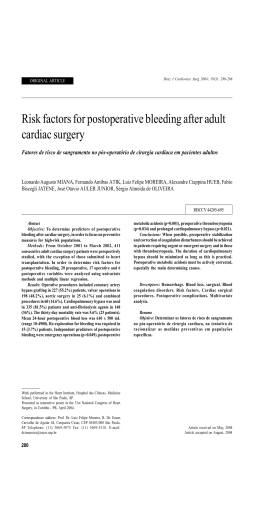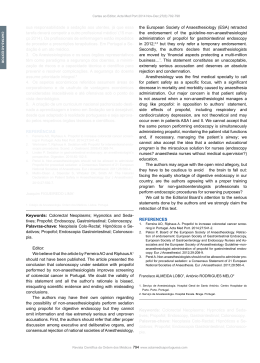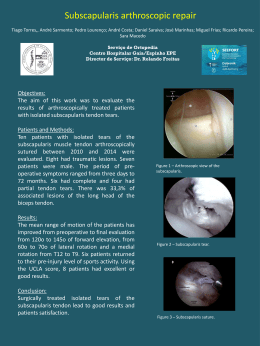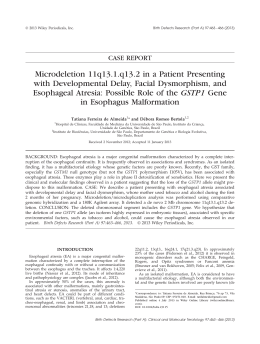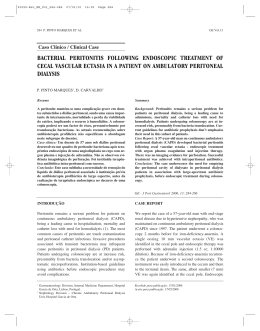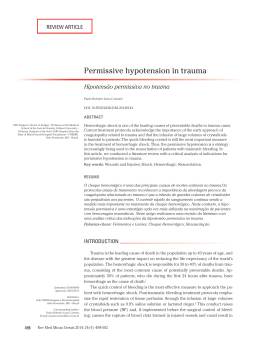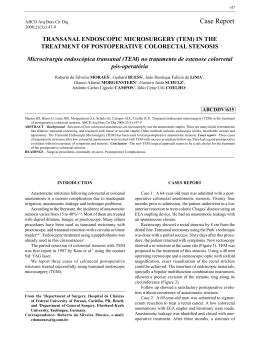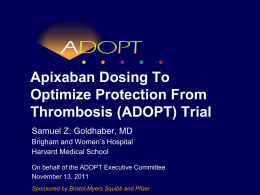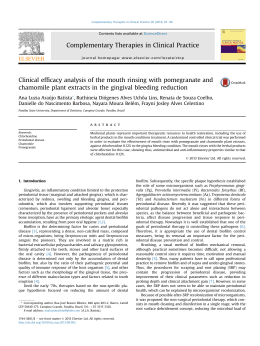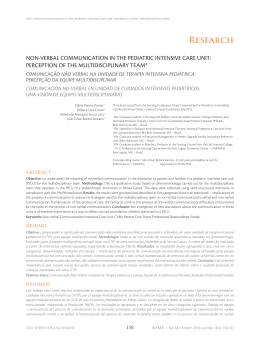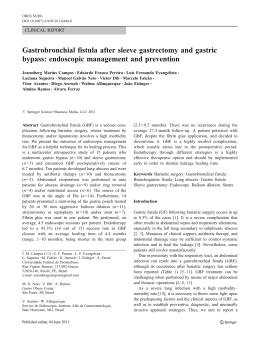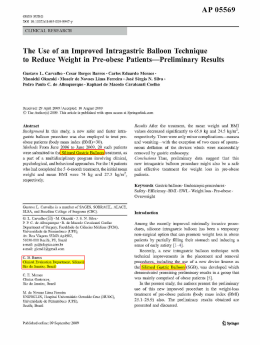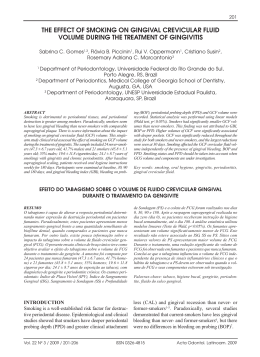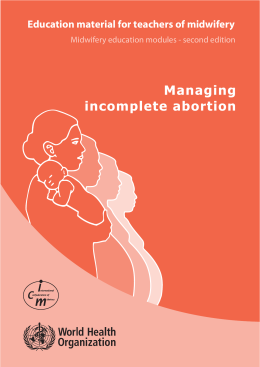1130-0108/2007/99/4/233-234 REVISTA ESPAÑOLA DE ENFERMEDADES DIGESTIVAS Copyright © 2007 ARÁN EDICIONES, S. L. REV ESP ENFERM DIG (Madrid) Vol. 99. N.° 4, pp. 233-234, 2007 Spontaneous extensive esophageal tear with upper digestive haemorrhage treated by endoclip application M. Areia, P. Amaro, P. Figueiredo, F. Portela, M. Ferreira, A. Rosa, J. M. Romãozinho, H. Gouveia and D. Freitas Department of Gastroenterology. Coimbra University Hospital. Coimbra, Portugal INTRODUCTION Spontaneous esophageal tears are a rare cause of upper digestive haemorrhage occurring usually after vomiting or retching, without previous instrumentation or trauma (1). If it involves the gastroesophageal junction or gastric cardia it’s called a Mallory-Weiss syndrome. CASE REPORT A 61-years-old male presented with emesis after some retching episodes. He had liver cirrhosis but no previous bleeding. An upper endoscopy revealed an extensive 10 cm tear involving the mucosa and submucosa layers of the distal esophagus sparing a 2 cm long segment proximal to the Z-line (Fig. 1). The laceration presented a slowly oozing haemorrhage that was stopped with the injection of 6 cc of epinephrine 1:10,000 and application of 17 endoclips to close the laceration. Recurrent bleeding 8 days later was controlled with further application of 4 endoclips. No further haemorrhagic recurrence occurred and an endoscopy procedure was repeated at week 6 (Fig. 2) and week 24 when no lesion was seen. Fig. 1. Endoscopic view showing an extensive 10 cm esophageal tear closed with application of 17 endoclips. Fig. 2. Endoscopic view at week 6 showing an esophageal scar still with 2 endoclips. 234 M. AREIA ET AL. REV ESP ENFERM DIG (Madrid) DISCUSSION Endoclips are a well establish endoscopic technique for the control of gastrointestinal (GI) bleeding, being used in peptic ulcers, Dieulafoy lesions, Mallory-Weiss tears, diverticular or post-polipectomy bleeding, but also in other situations such as closure of lacerations (2), perforations, fistulas or anastomotic leaks, for anchoring tubes, catheters and stents or just as fluoroscopic markers (3). Effectiveness and safety were accessed in patients with upper GI bleeding due to Mallory-Weiss syndrome by Yamaguchi Y et al. in a study of 26 patients (4). Technical success was achieved in 100%, with an average number of 2.8 endoclips per patient and no complications, recurrent bleeding or deaths. No tissue injury or impairment of healing occurred due to the endoclips. In fact they seem to enhance the healing process along with the haemostatic function as it appears to have happened in our patient. In extensive tears as the one we describe, even with associated haemorrhage, as long as the laceration doesn’t involve all the layers of the esophageal wall, endoclipping seems to be a good and effective endoscopic technique. REFERENCES 1. 2. 3. 4. Younes Z, Johnson DA. The spectrum of spontaneous and iatrogenic esophageal injury: perforations, Mallory-Weiss tears, and hematomas. J Clin Gastroenterol 1999; 29 (4): 306-17. Gölder SK. Traumatic incomplete rupture of the gastric wall: endoscopic treatment with clip application. Endoscopy 2005; 37 (5): 497. Raju GS, Gajula L. Endoclips for GI endoscopy. Gastrointest Endosc 2004; 59 (2): 267-79. Yamaguchi Y, Yamato T, Katsumi N, Morozumi K, Abe T, Ishida H, et al. Endoscopic hemoclipping for upper GI bleeding due to Mallory-Weiss syndrome. Gastrointest Endosc 2001; 53 (4): 427-30. REV ESP ENFERM DIG 2007; 99(4): 233-234
Download
